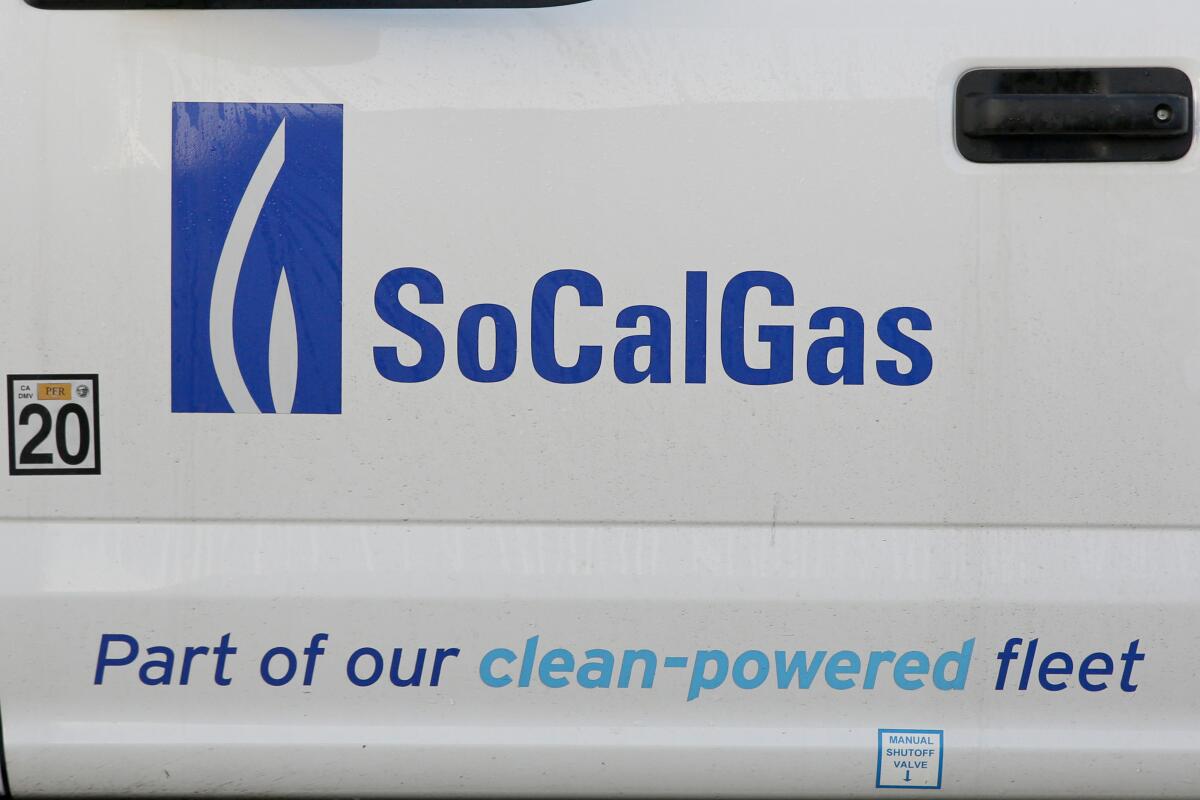Want to know if your gas bill will increase this winter? SoCalGas can warn you with a text

- Share via
In response to last winter’s abnormally high gas bills, the Southern California Gas Co. has launched a text-messaging service that aims to alert customers so they can adjust their gas and energy use accordingly.
SoCalGas customers were warned at the start of 2023 that their natural gas bill could be double what they paid a year earlier.
At the time, a combination of out-of-state natural gas supply constraints, early cold weather conditions and low storage inventories in the western region drove up commodity prices, according to the U.S. Energy Information Administration.
To give customers a direct notice of potential increases in the future, SoCalGas recently created the Natural Gas Price Notice. This is an alternative way customers can be alerted, other methods include through email, mail correspondence and the utility’s website.
Don Widjaja, the service provider’s vice president for customer solutions, said people are used to getting important messages through their cellphones.
“We feel that this is an opportunity to meet the customer where they are and the expectation is, a text message alert is important and it’ll catch your attention,” he said.
Instead of turning on your heater, and paying a higher gas bill, consider layering up or sealing the gaps in your door that are letting heat escape.
Once the customers have the information, they can make an informed decision about their gas usage, especially during a seasonal billing increase, Widjaja said.
The optional notification system will send customers a text message when there is a 20% or more increase in the monthly natural gas commodity cost, which affects a portion of the bill.
The alert will not notify customers when their increased usage leads to a higher bill. Customers who wish to track their usage can do so from their online account.
If there is a need to send out the alert, it will be between December and March 2024.
Customers can sign up for the text alert through their online SoCalGas account.
If an alert is sent, here are ways customers can conserve energy at home and reduce their gas bill.
Energy-saving tips
Customers who are looking to save energy can start by lowering the temperature on their thermostat. Pacific Gas & Electric says customers can decrease their bill by about 2% for each degree that the temperature is lowered on the thermostat. Turning down the temperature from 70 to 65 degrees, for example, saves about 10%.
Cold showers in the winter aren’t ideal but cold water uses less energy, according to Widjaja. That also applies to doing laundry with cold water.
Paul Hult, 102, reluctantly accepts help for gas bill as SoCalGas customers rage against a rate hike request.
Turning down the temperature on a water heater to 120 degrees will also reduce the amount of energy it takes to produce and maintain the hot water. The U.S. Department of Energy offers a video tutorial on how to properly set the water heater temperature.
How someone warms their dinner can also be an energy-saving practice. PG&E says reheating leftovers in a microwave takes less time and uses up to 80% less energy than a standard oven.
Staying warm without a gas bill hike
As Southern California enters the winter season next month, the crisp and anticipated 50-degree weather makes it difficult for people not to turn on their wall heater or furnace.
Instead of using the natural gas-powered wall heater, people can opt to use a space heater instead.
Showers, with a growing likelihood of thunderstorms, are expected across California on Wednesday. After a short break, storms are expected to pick back up Friday.
To avoid using the heater for long periods of time, retain the heat in the house by ensuring any gaps or cracks are sealed.
The Natural Resources Defense Council advises that people check their baseboards and attic hatches for openings that can be sealed to make the living space less drafty.
Wind can also get in through the front door if the weather-stripping is worn. If the weather-stripping can’t be replaced, cover the opened space with a towel or blanket.
More to Read
Sign up for Essential California
The most important California stories and recommendations in your inbox every morning.
You may occasionally receive promotional content from the Los Angeles Times.














